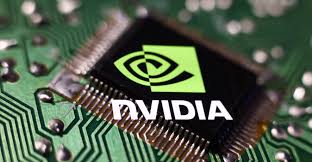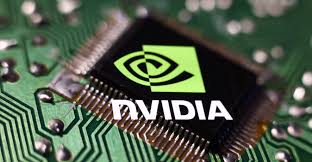
Nvidia, a leading name in artificial intelligence (AI) hardware, recently issued a revenue forecast that left Wall Street uneasy, with shares slipping by over 3% in premarket trading. The primary concern stems not from a lack of demand but from Nvidia's ability to meet the insatiable appetite for its cutting-edge chips, essential for powering AI innovations worldwide. The company’s struggle to keep up with demand highlights broader challenges in the chipmaking industry, particularly advanced manufacturing processes and supply chain constraints.
A Supply Problem, Not a Demand Issue
Despite the revenue forecast signaling the slowest growth in seven quarters, Nvidia's position as a key enabler of AI advancements remains unshaken. Its flagship chips, particularly the new Blackwell series, are highly sought after by companies racing to create next-generation AI systems. According to industry analysts, Nvidia’s chips are being sold as fast as Taiwan Semiconductor Manufacturing Co. (TSMC), its primary contractor, can produce them.
However, Nvidia's CEO Jensen Huang emphasized that supply chain constraints will persist, predicting that demand will outstrip supply well into fiscal 2026. This bottleneck, analysts say, is not due to waning interest but the immense complexity of producing Nvidia’s chips, which require advanced packaging processes and precise manufacturing techniques.
Advanced Packaging: A Bottleneck in Production
At the heart of Nvidia's production challenge is the advanced packaging required for its Blackwell chips. Unlike traditional chips, Blackwell is composed of multiple smaller chips assembled into a single unit, a process that demands intricate assembly methods. TSMC, the world's largest contract chipmaker, is expanding capacity to address this issue but faces significant hurdles in scaling the advanced packaging technology.
“Blackwell relies on more advanced packaging than previous chips, creating a new wrinkle in production,” explains Ben Bajarin, CEO of Creative Strategies. He notes that Nvidia is unlikely to meet its full demand until 2025, as TSMC and other industry players race to improve packaging capabilities.
Production Challenges and Design Flaws
Exacerbating the production delays was a design flaw discovered in the Blackwell chip earlier this year, which required Nvidia to undertake a costly and time-consuming "mask change." This manufacturing adjustment, though resolved, temporarily reduced chip yields and delayed production timelines.
The chip manufacturing process itself is highly intricate, involving hundreds of steps to etch complex circuits onto silicon wafers. Even minor flaws can disrupt production for months, impacting Nvidia’s ability to meet market expectations.
Michael Schulman, Chief Investment Officer at Running Point Capital, warns of further risks. “There’s the possibility that these bottlenecks could worsen, which would directly impact Nvidia’s revenue projections,” he said.
Impact on Nvidia’s Financials
The production hiccups have already begun to weigh on Nvidia’s financial performance. Executives warned that gross margins would dip into the low-70% range as the company ramps up production of the Blackwell chips. Despite these short-term pressures, Nvidia remains optimistic about its long-term prospects, pointing to the strength of its demand pipeline.
The company has already shipped approximately 13,000 samples of the new chip and expects to surpass initial revenue estimates for the ongoing quarter. “We are ramping Blackwell from zero to something extremely large,” said Huang. “By definition, the laws of physics limit how fast you can ramp production.”
Global Implications of Nvidia’s Supply Constraints
Nvidia’s supply issues extend beyond its own business, impacting broader industries reliant on AI advancements. From autonomous vehicles to healthcare and renewable energy, AI-driven solutions are increasingly central to global innovation. Nvidia’s chips are pivotal in training large-scale AI models, and delays in their availability could slow progress across multiple sectors.
Hendi Susanto, a portfolio manager at Gabelli Funds, underscores the significance of Nvidia’s role. “The key focus is supply—how much Nvidia can produce. Demand for their chips remains absolutely and exceptionally strong,” he said.
The Bigger Picture: Challenges for the Chipmaking Industry
Nvidia’s struggles reflect wider challenges in the semiconductor industry, where cutting-edge technologies require unprecedented levels of precision and coordination. Advanced packaging, in particular, has emerged as a critical bottleneck, with only a handful of companies like TSMC capable of executing these complex processes.
Moreover, geopolitical tensions and trade restrictions further complicate the supply chain. The semiconductor industry is heavily reliant on global networks, and any disruption—be it a natural disaster, trade dispute, or technical issue—can have cascading effects.
Future Outlook for Nvidia
While Nvidia faces near-term production challenges, its long-term outlook remains robust. AI technologies are expected to grow exponentially, with Nvidia at the forefront of this transformation. The company’s ongoing efforts to refine its manufacturing processes and expand capacity are likely to position it well for sustained growth.
Investors and analysts alike remain bullish on Nvidia’s prospects, viewing the current supply constraints as temporary hurdles in an otherwise strong growth trajectory. As AI continues to reshape industries and economies, Nvidia’s role as a leading hardware provider underscores its importance in the global tech ecosystem.
(Source:www.channelnewsasia.com)
A Supply Problem, Not a Demand Issue
Despite the revenue forecast signaling the slowest growth in seven quarters, Nvidia's position as a key enabler of AI advancements remains unshaken. Its flagship chips, particularly the new Blackwell series, are highly sought after by companies racing to create next-generation AI systems. According to industry analysts, Nvidia’s chips are being sold as fast as Taiwan Semiconductor Manufacturing Co. (TSMC), its primary contractor, can produce them.
However, Nvidia's CEO Jensen Huang emphasized that supply chain constraints will persist, predicting that demand will outstrip supply well into fiscal 2026. This bottleneck, analysts say, is not due to waning interest but the immense complexity of producing Nvidia’s chips, which require advanced packaging processes and precise manufacturing techniques.
Advanced Packaging: A Bottleneck in Production
At the heart of Nvidia's production challenge is the advanced packaging required for its Blackwell chips. Unlike traditional chips, Blackwell is composed of multiple smaller chips assembled into a single unit, a process that demands intricate assembly methods. TSMC, the world's largest contract chipmaker, is expanding capacity to address this issue but faces significant hurdles in scaling the advanced packaging technology.
“Blackwell relies on more advanced packaging than previous chips, creating a new wrinkle in production,” explains Ben Bajarin, CEO of Creative Strategies. He notes that Nvidia is unlikely to meet its full demand until 2025, as TSMC and other industry players race to improve packaging capabilities.
Production Challenges and Design Flaws
Exacerbating the production delays was a design flaw discovered in the Blackwell chip earlier this year, which required Nvidia to undertake a costly and time-consuming "mask change." This manufacturing adjustment, though resolved, temporarily reduced chip yields and delayed production timelines.
The chip manufacturing process itself is highly intricate, involving hundreds of steps to etch complex circuits onto silicon wafers. Even minor flaws can disrupt production for months, impacting Nvidia’s ability to meet market expectations.
Michael Schulman, Chief Investment Officer at Running Point Capital, warns of further risks. “There’s the possibility that these bottlenecks could worsen, which would directly impact Nvidia’s revenue projections,” he said.
Impact on Nvidia’s Financials
The production hiccups have already begun to weigh on Nvidia’s financial performance. Executives warned that gross margins would dip into the low-70% range as the company ramps up production of the Blackwell chips. Despite these short-term pressures, Nvidia remains optimistic about its long-term prospects, pointing to the strength of its demand pipeline.
The company has already shipped approximately 13,000 samples of the new chip and expects to surpass initial revenue estimates for the ongoing quarter. “We are ramping Blackwell from zero to something extremely large,” said Huang. “By definition, the laws of physics limit how fast you can ramp production.”
Global Implications of Nvidia’s Supply Constraints
Nvidia’s supply issues extend beyond its own business, impacting broader industries reliant on AI advancements. From autonomous vehicles to healthcare and renewable energy, AI-driven solutions are increasingly central to global innovation. Nvidia’s chips are pivotal in training large-scale AI models, and delays in their availability could slow progress across multiple sectors.
Hendi Susanto, a portfolio manager at Gabelli Funds, underscores the significance of Nvidia’s role. “The key focus is supply—how much Nvidia can produce. Demand for their chips remains absolutely and exceptionally strong,” he said.
The Bigger Picture: Challenges for the Chipmaking Industry
Nvidia’s struggles reflect wider challenges in the semiconductor industry, where cutting-edge technologies require unprecedented levels of precision and coordination. Advanced packaging, in particular, has emerged as a critical bottleneck, with only a handful of companies like TSMC capable of executing these complex processes.
Moreover, geopolitical tensions and trade restrictions further complicate the supply chain. The semiconductor industry is heavily reliant on global networks, and any disruption—be it a natural disaster, trade dispute, or technical issue—can have cascading effects.
Future Outlook for Nvidia
While Nvidia faces near-term production challenges, its long-term outlook remains robust. AI technologies are expected to grow exponentially, with Nvidia at the forefront of this transformation. The company’s ongoing efforts to refine its manufacturing processes and expand capacity are likely to position it well for sustained growth.
Investors and analysts alike remain bullish on Nvidia’s prospects, viewing the current supply constraints as temporary hurdles in an otherwise strong growth trajectory. As AI continues to reshape industries and economies, Nvidia’s role as a leading hardware provider underscores its importance in the global tech ecosystem.
(Source:www.channelnewsasia.com)














